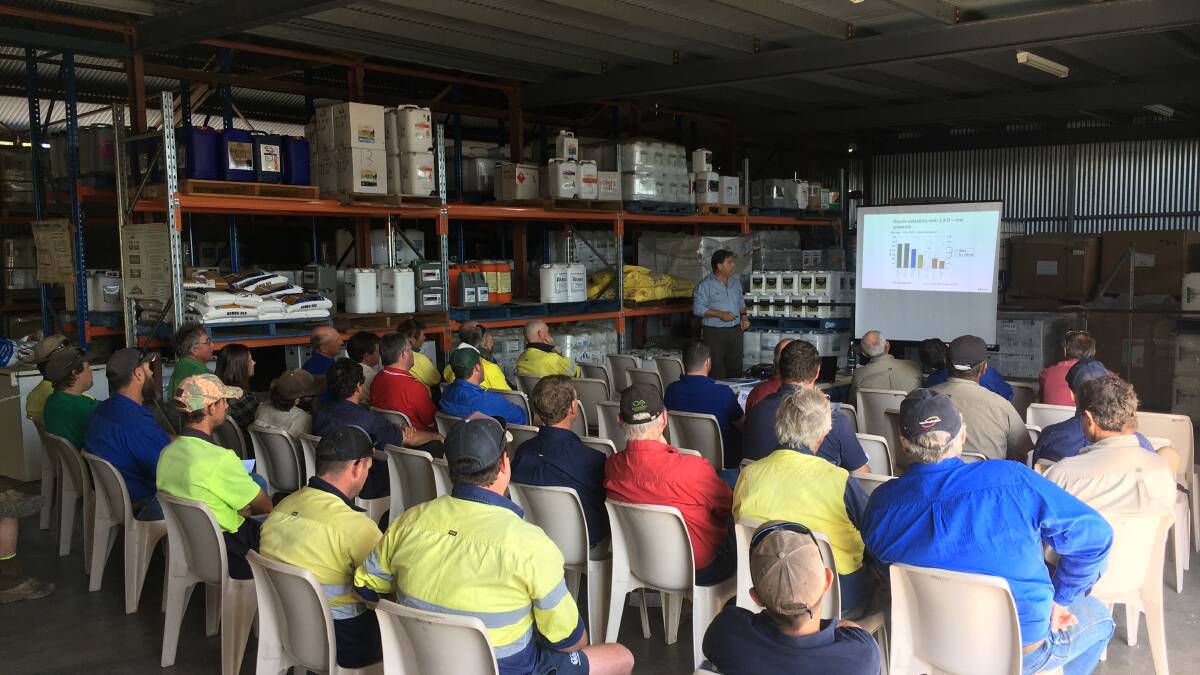
Last year's withdrawal of the registration of 2,4-D herbicide products, by the Australian Pesticides and Veterinary Medicines Authority, followed by the issuing of a permit which tightened restrictions around its use, put significant barriers in place for the use of certain spray equipment.
Practically, the required lowering of boom height made the use of self-propelled and optical sprayers off-label and thus illegal in most instances.
Earlier this year, chemical manufacturer Nufarm stepped up to the plate, applying for two permits which effectively made the restrictions for use more workable.
Nufarm field research officer Frank Taylor said the permit issued by the APVMA set out a number of restrictions and directions for use, including a move to a minimum Very Coarse droplet, as well as mandatory downwind buffer zones and a restriction of boom height to a maximum of 50cm above the target.
He said through the consultation period it became apparent there would be issues with spray operators being able to comply with the new permit and proposed label changes.
"If you think about the size of some of the booms used, 24, 36 out to 48 metres, lowering the boom height to 50 centimetres above the target means you are likely to damage the boom, particularly on uneven ground," Mr Taylor said.
"If using a self-propelled sprayer your boom height was already off-label as the equipment couldn't get down that low."
Mr Taylor said this resulted in Nufarm submitting and ultimately having approved, two subsequent permits from the APVMA to lift the boom height.
"Nufarm reviewed the scientific modelling conducted by the APVMA and determined that increasing the minimum droplet size from Very Coarse to Ultra Coarse would allow users to raise booms to 85cm without increasing the risk of spray drift," he said.
"Users should always keep boom height as low as possible, but it is important to recognise this will not always be possible and to give users an option to comply with these new APVMA requirements."
Mr Taylor said the other permit related to optical spot spray technology requiring a higher boom height to ensure the cameras efficacy while retaining the original droplet size to ensure efficacy on what are generally hard to kill weeds.
"Using the modelling, increasing the boom height to 75cm, whilst reducing the droplet size to Coarse, could still result in to increase in spray drift risk provided the weed cover, or total area treated per hectare, was only 10 per cent or less."
Industry take the lead on drift
An industry wide effort to educate farmers and spray operators on how best to minimise off-target spray drift is well underway.
A veteran of two decades worth of spray efficacy and drift extension, Nufarm field research officer Frank Taylor said the company has further ramped up its current extension program in light of the new guidelines for the use of 2,4-D.
"We have run a series of SprayWise workshops across the country, from Central Queensland to Western Australia, reaching over 1200 growers and applicators so far," he said.
Mr Taylor said Nufarm's SprayWise Stewardship program involved upskilling growers on the best practice advice on the use of agricultural pesticides as well as offering them the ability to utilise the companies SprayWise decision tool which provided information and guidelines on current spray conditions.
Grains Research Development Corporation crop protection officer Vicki Green said farmers and operators could access a range of materials, fact sheets and videos from the GRDC website to help them to increase spray efficacy while reducing off-target drift.
"We've recently updated a number of fact sheets, videos and the spray drift landing site on the GRDC web page," she said.
"People can go to that website and get access to all the current resources we have available.
"These include resources to help them respond to the recent changes to the 2,4-D labels, as well as how to maintain spray efficacy while minimising the impacts of drift."
Mrs Green said the GRDC invested in a range of research projects in an effort to maintain the safety, efficacy and availability of pesticides now and into the future.


